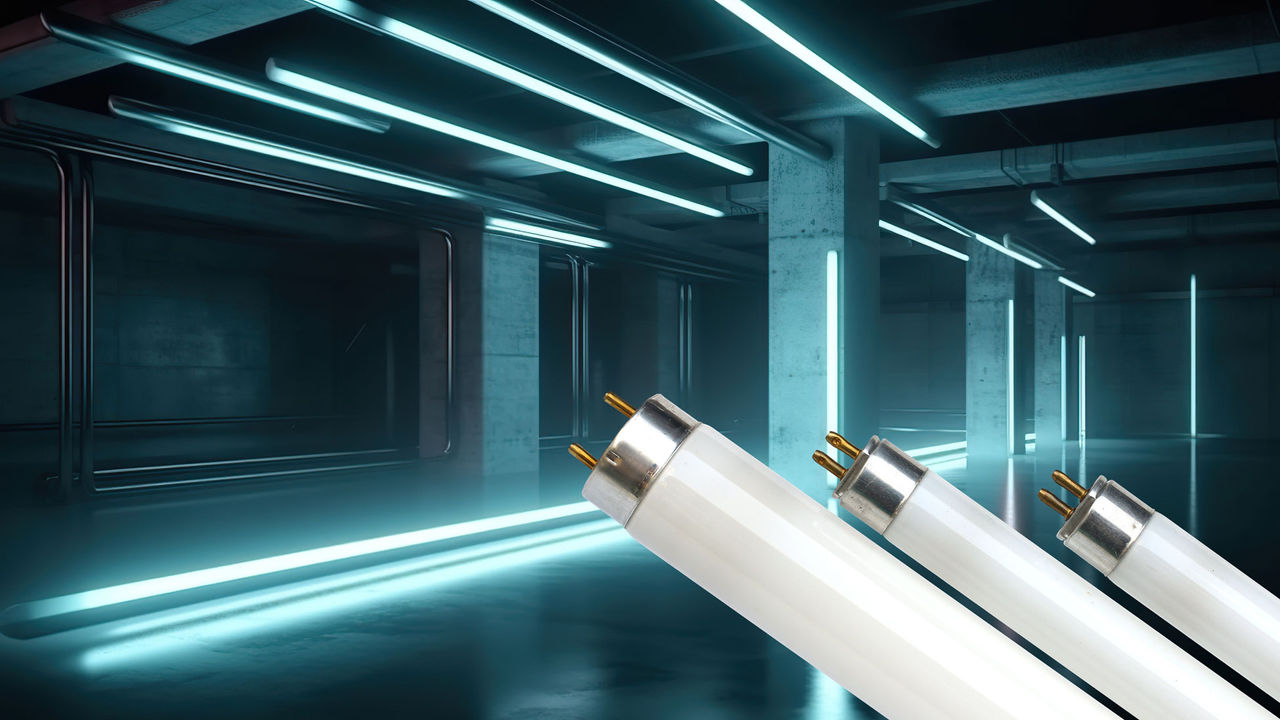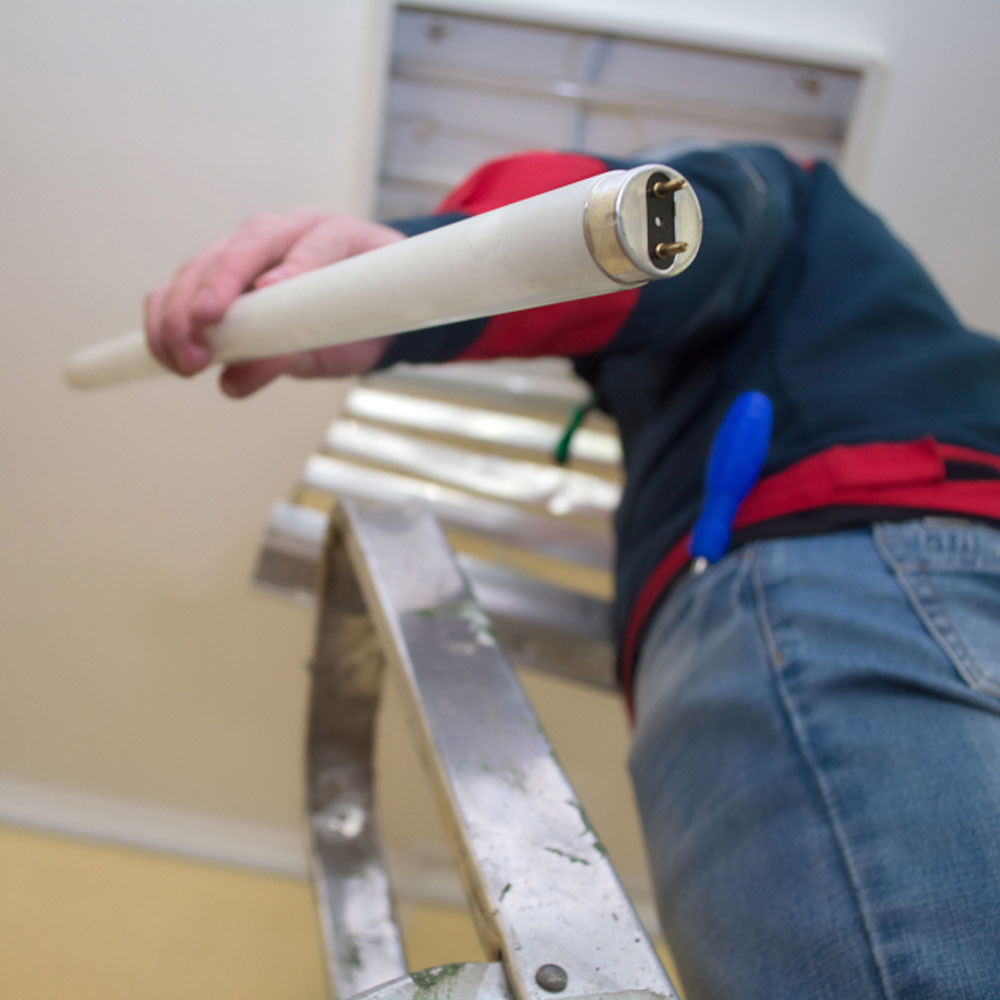In this article
Are you being easily LED?
With T8 and T5 fluorescent tubes soon to be banned, LED tubes can look like a quick energy saving, emissions reducing, space saving win for lighting refurbishment projects. But without some detailed thinking and careful planning, what seems to be a quick switch for the better can soon take a costly turn for the worse.

From September 2023, in accordance with ecodesign and RoHS directives and their UK equivalents, the sale of T5/T8 fluorescent and compact fluorescent lamps (CFLs) will be phased out of the European and UK markets. Lighting schemes which currently use any of these lamps will need to find new light sources.
That could mean availability issues and rising costs, as large numbers of building operators face the same challenge. Getting ahead of the game could save time and money. But before you leap into LEDs, there are hurdles to avoid and questions to consider.
Fittings fit for purpose?
If an existing fitting has been in place for some time, there’s always the risk of plastic degradation. This could easily result in breakages when removing the existing tube or swapping in the replacement, leading to a bodged job or extra costs for replacement parts. Suddenly your ‘quick fix’ is slower and more expensive than expected.
Lights too heavy?
Weight and thermal characteristics differ significantly between LED and fluorescent technologies. In particular, LEDs require a method of heatsinking to remove heat, which inevitably adds weight.
As lamp holders are specified based on a specific lamp weight, any weight increase can result in them being insufficiently robust to hold the LED tube.
The right kind of light?
How efficiently a lighting product produces and distributes light (its photometric performance), is based on the light source it was designed for. When you are replacing fluorescent with LED, you will need to re-run those calculations to be sure you are still achieving the same directional light output.
If not, then impaired, poor, non-uniform lighting or glare will affect the experience and comfort of those using the space, and you may not be compliant with EN1264:1 2021 legislation.

How efficient is efficient?
When swapping fluorescent for LED, any modifications to the original luminaire will invalidate existing warranties.
Rewiring the product – for example, to remove existing components from the electrical circuit – will make safety tests null and void, and any marking on the product (such as the UKCA / CE mark and manufacturer marking) should be removed.
The product must be retested to the relevant safety standards and recertified in its new configuration before it can legally be operated.
Formal testing, to ensure conformity with the ecodesign and RoHS legal requirements, is also required, and the results must be documented in the technical product file.
When you take all the questions above into consideration, LED tubes may not be such a quick, cost-effective replacement for T8/T5 tubes as they first appear. Why not ask your usual ERIKS contact to shine more light on the situation?
For more information on Lighting Solutions from ERIKS, please contact your local ERIKS Service Centre, who will be happy to discuss your options.
#ERIKS #LetsMakeIndustryWorkBetter #Lighting #Legisaltion #Efficiency

